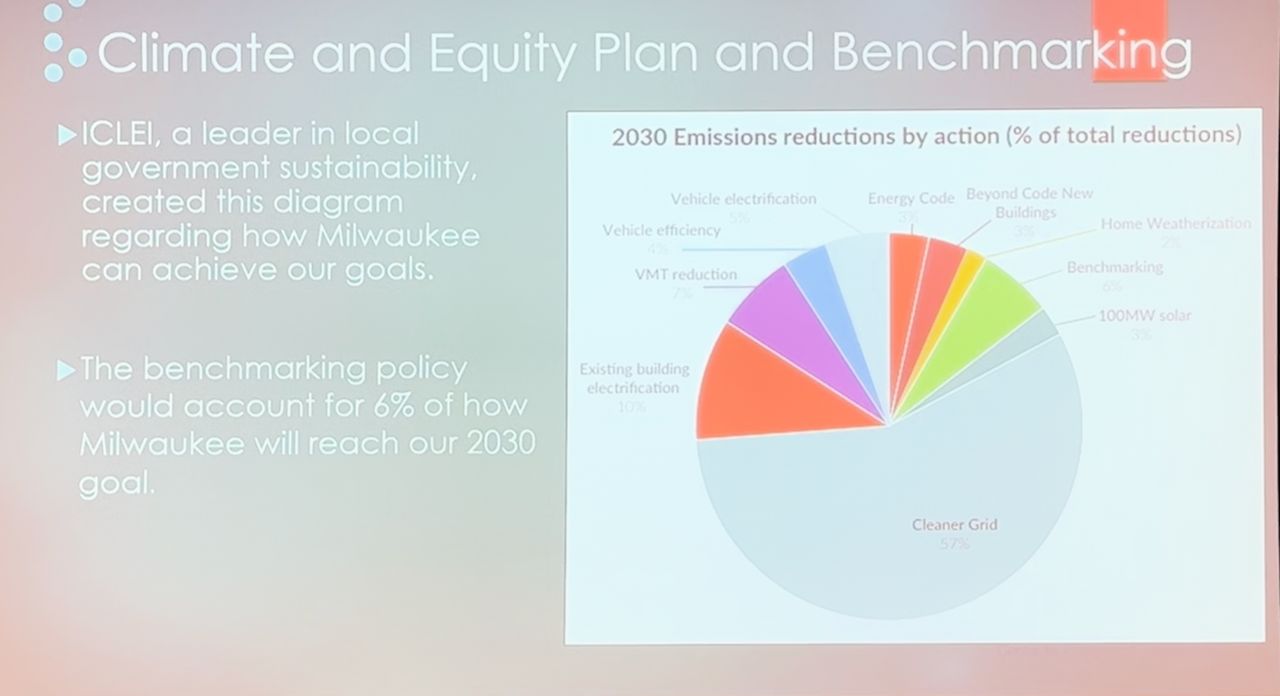MILWAUKEE — Milwaukee’s Environmental Collaboration Office is helping property owners in the city improve their building’s energy performance.
The office invited the public to several community conversations to share information about its new Efficient Building Benchmarking program.
The program will require owners of commercial buildings and multi-family units that are at least 50,000 square feet to track and report their energy.
Environmental Sustainability Program Manager Pamela Ritger de la Rosa said building owners aren’t expected to report this information until either the summer or fall of 2025. However, she encouraged them to make several operational changes in the meantime.

“Are the lights staying on overnight or when nobody is there? Or should the temperature be adjusted a little bit, higher in the summer, lower in the winter to save money on heating and cooling costs? Or making sure that those heating and cooling systems are aligned when people are in the building,” said Ritger de la Rosa.
Milwaukee has had a benchmarking program for its municipal buildings since 2009.
Now that the city is expanding this program, Johnson Controls in Glendale wants to help building owners improve their building’s energy performance with more efficient equipment.
Global Director of Operations Brian Pfeifer said the virtual reality program on the company’s showroom floor shows customers product options.
“They can virtually go in, see a heat pump, see a chiller, talk about the different solutions that we have and we can update this experience as our product line changes versus bringing something big and physical inside,” he said.
Pfeifer said Johnson Controls’ goal is to help building owners get the most out of their facilities.
“A customer experience right here in Milwaukee in our headquarter’s facilities gives us the opportunity to not only communicate to our employees but also the community and our customers in terms of what we can do to help continue to make our customer’s facilities and the environment more safe, sustainable and comfortable,” said Pfeifer.

The Environmental Collaboration Office said making these types of changes will make the benchmarking program more effective.
Ritger de la Rosa said cities like Chicago, Minneapolis and Madison are seeing good results from their benchmarking programs.
“We really start to see a reduction in energy use of about 2.4% per year for at least the first three years,” said Ritger de la Rosa. “That’s about 7.2% reduction in energy use, which can lead to hundreds of thousands of dollars in savings in those monthly utility bills.”
Pfeifer said making buildings more energy efficient can also reduce the 40% of greenhouse gas emissions that buildings cause globally.
“Replacing equipment or adding digital technology on top of that equipment so taking the investments you have already made and helping them act or respond more efficiently or more effectively so that you are not having to rip out or waste an investment, you can build and grow upon the things you are already doing,” said Pfeifer.
The new energy benchmarking program is just one of the city’s “Big Ideas” that aims to reduce Milwaukee’s emissions 45% by 2030 with the goal of net zero emissions by 2050.



